The Australian Bureau of Statistics (ABS) has released dwelling approvals data for the month of March. At the national level, the number of dwelling approvals rose by a seasonally adjusted 2.8% to 19,419. The overall rise was driven by the volatile unit and apartment segment, which jumped by 5.3% in March. By comparison, the more stable house approvals segment rose by a more moderate 1.1% over the month.
The result beat analysts’ expectations, who had expected a 1.5% fall in approvals over the month.
In the year to March 2015, dwelling approvals rose by a seasonally-adjusted 23.6%, driven overwhelmingly by strong growth in unit approvals (+59.2%), with house approvals up only moderately (+1.6%):
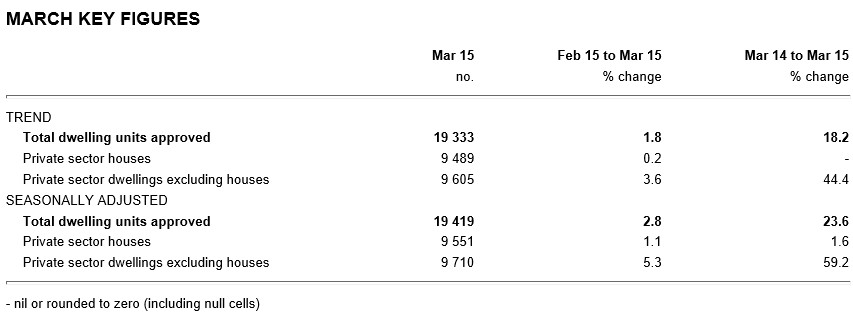
A chart showing the time series of seasonally-adjusted dwelling approvals at the national level is provided below, split-out by detached houses and units & apartments:
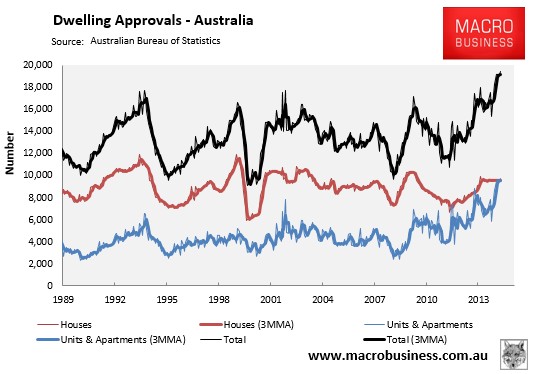
As shown above, dwelling approvals have gotten a second wind over the past six months.
There were a record 210,482 approvals in the year to March 2015, with unit & apartments surging ahead and detached house approvals merely running just above the 30-year average (see next chart).
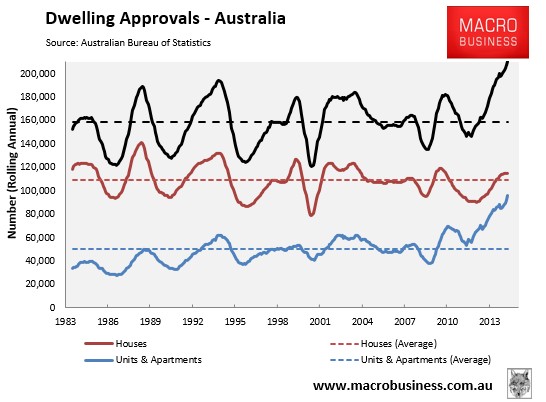
However, approvals remain unremarkable in population-adjusted terms, given that Australia’s population has grown by more than 45% over the past 30-years (see next chart).
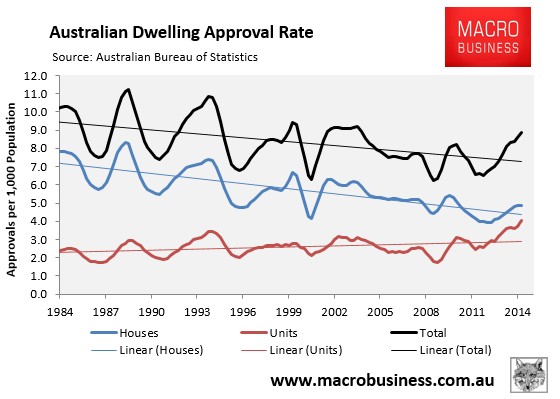
The below chart shows the time-series of approvals at the state level on a rolling annual basis:
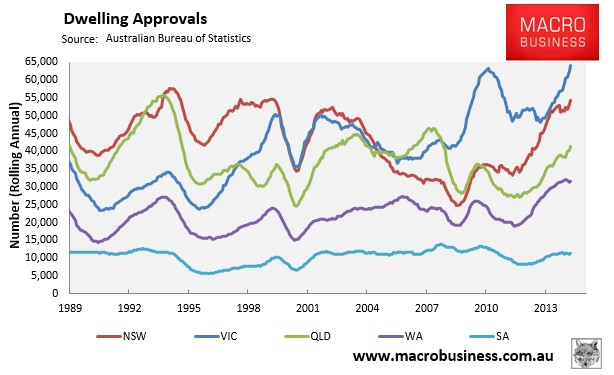
As you can see, dwelling approvals have experienced a strong second wind in Victoria, and to a lesser extent New South Wales and Queensland. However, they are weakening in Western Australia, and remain subdued in South Australia.
The next few month’s approvals data continues to be vital as it will confirm whether the mini construction boom is peaking, pointing to a potential weakening of housing construction activity in 2015 just as the mining investment cliff intensifies, or whether it has much further to run.

